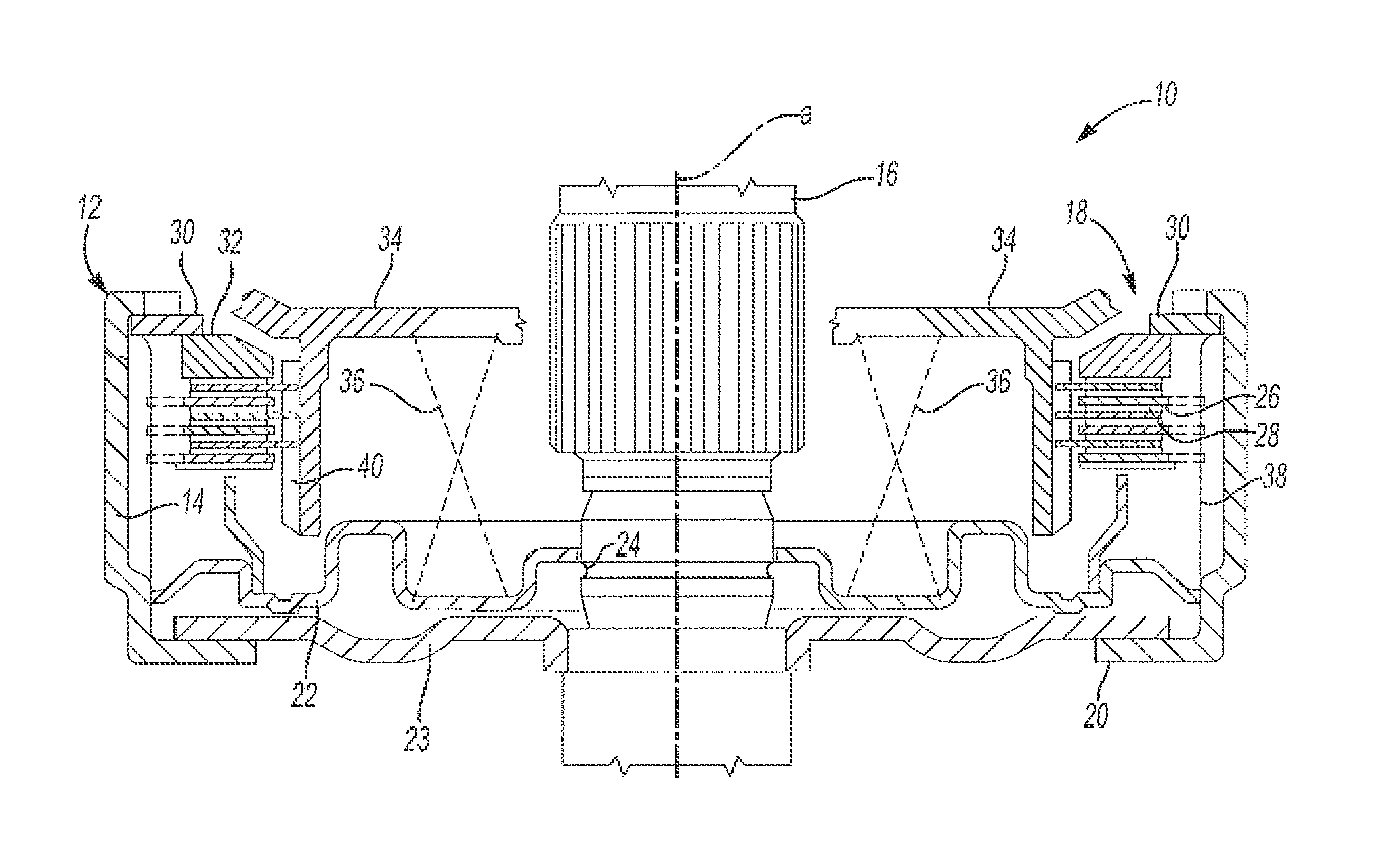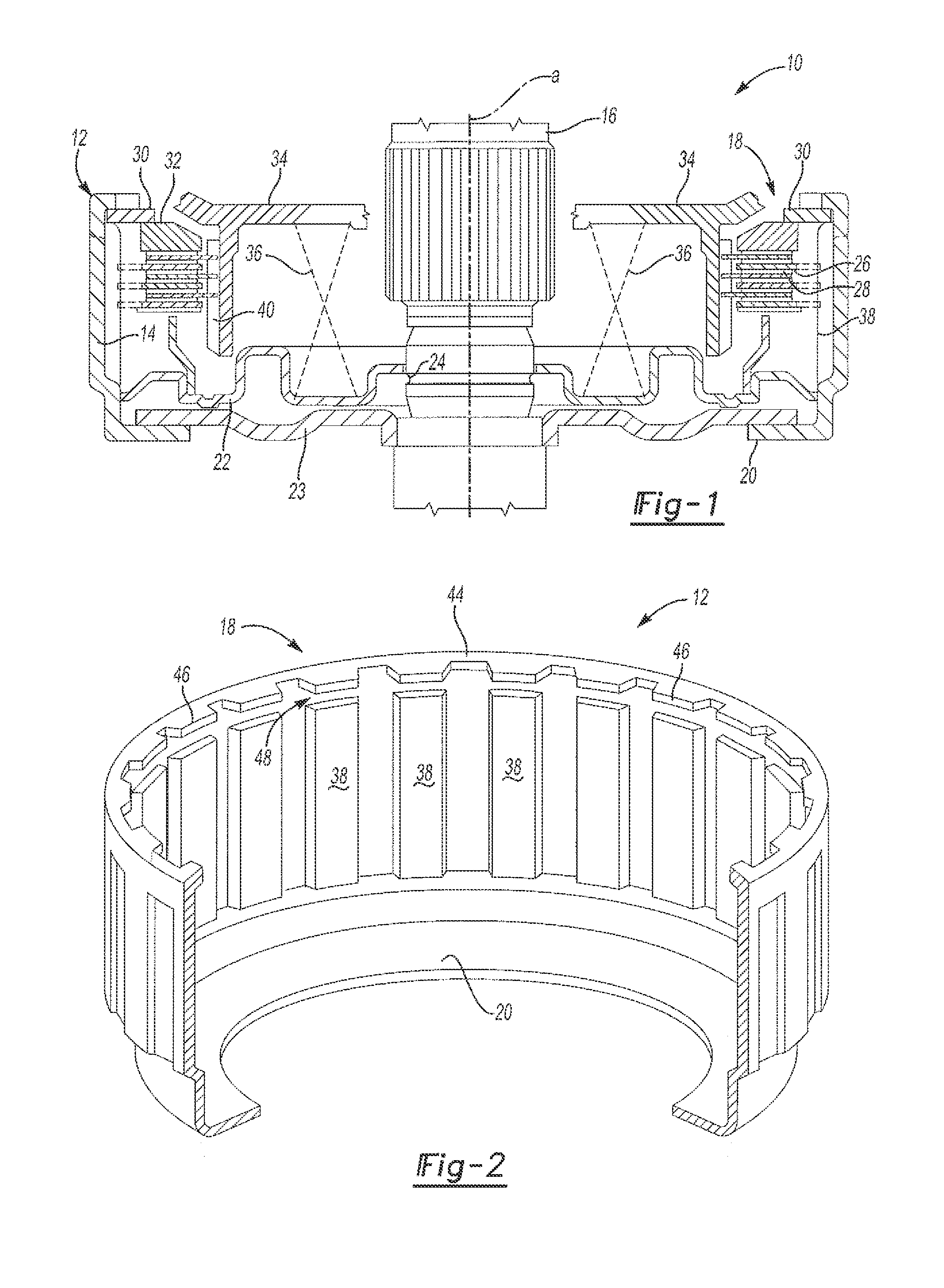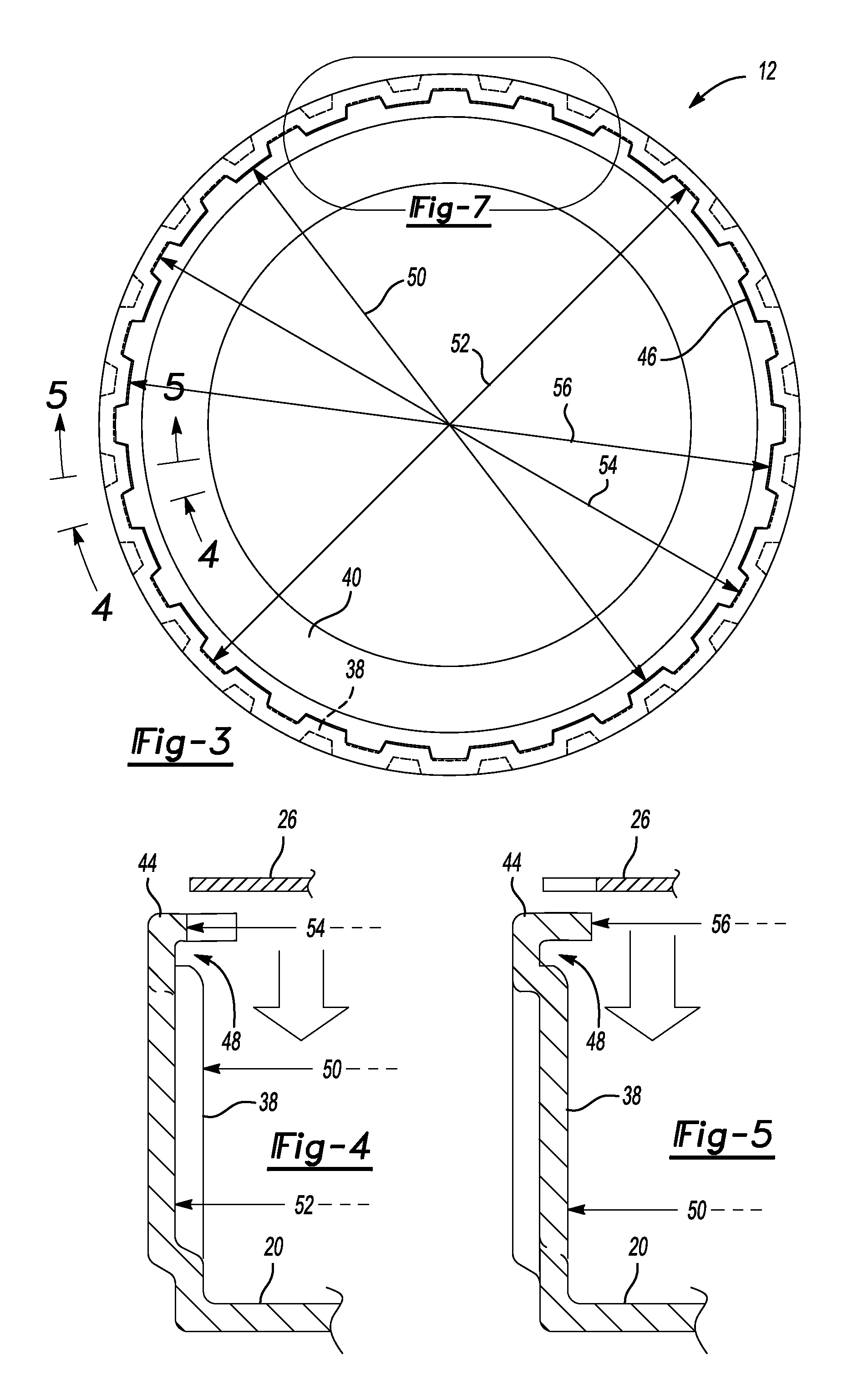Clutch assembly with formed retention ring
a technology of retention ring and clutch housing, which is applied in the field of clutches, can solve the problems of the release of the snap ring from the clutch housing, and achieve the effects of reducing the thickness of the clutch housing, facilitating the deformation of the open end, and reducing the mass of the typical housing
- Summary
- Abstract
- Description
- Claims
- Application Information
AI Technical Summary
Benefits of technology
Problems solved by technology
Method used
Image
Examples
Embodiment Construction
[0022]Referring to FIG. 1, a side sectional view of the clutch assembly of the present invention is generally shown at 10. The assembly 10 includes a housing 12 defined by an annular wall 14. The annular wall 14 circumscribes a transmission shaft 16 that defines a shaft axis A. The annular wall 14 of the housing 12 extends axially between an open end 18 and a floor 20. The floor 20 extends radially inwardly toward the transmission shaft 16. A piston 22 circumscribes the transmission shaft 16 and is positioned adjacent the floor 20 of the housing 12. A seal 23 seals the floor 20 of the housing 12 to the transmission shaft 16. Transmission fluid pumps through the transmission shaft 16 through outlets 24 and to the space located between the piston 22 and the floor 20 of the housing 12 to shift the clutch assembly 10 in a known manner. A fibrous plate 28 circumscribes the transmission shaft 16 and is positioned in an abutting relationship between the piston 22 and a plurality of clutch ...
PUM
 Login to View More
Login to View More Abstract
Description
Claims
Application Information
 Login to View More
Login to View More - R&D
- Intellectual Property
- Life Sciences
- Materials
- Tech Scout
- Unparalleled Data Quality
- Higher Quality Content
- 60% Fewer Hallucinations
Browse by: Latest US Patents, China's latest patents, Technical Efficacy Thesaurus, Application Domain, Technology Topic, Popular Technical Reports.
© 2025 PatSnap. All rights reserved.Legal|Privacy policy|Modern Slavery Act Transparency Statement|Sitemap|About US| Contact US: help@patsnap.com



